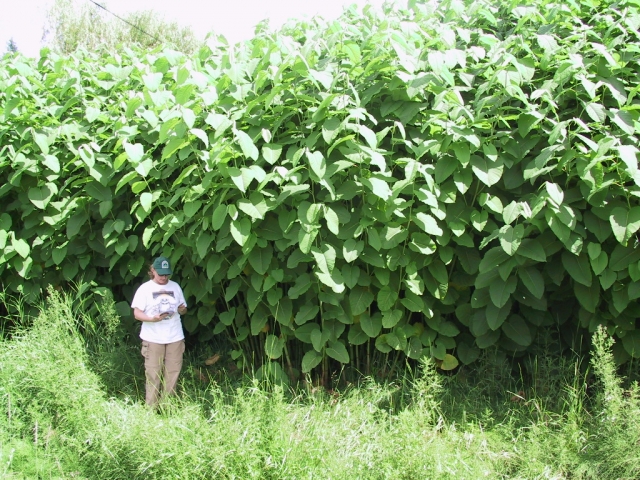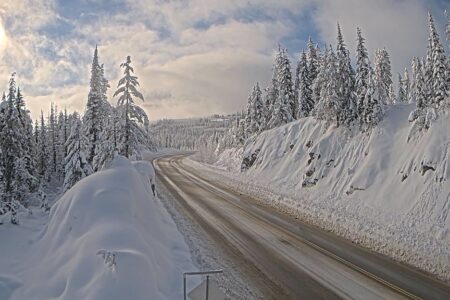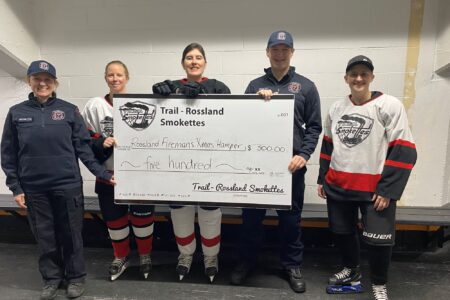Knotweed Infestations = Higher Taxes and Lower Property Values
Dumping of knotweed cuttings just spreads the problem — they can take root. Knotweed and other noxious weeds are accepted free of charge at landfills — so please take your cuttings there; don’t spread knotweed infestations around the countryside.
Invasive knotweed has been accurately described as the plant that is eating BC. It can lower property values just by being on or near your property, and by growing through foundations and your drains. It increases your taxes by damaging road and sewer infrastructure and costing taxpayer dollars to try to control it. Some of the environmental impacts of invasive knotweeds are:
· Degrades wildlife habitat,
· Reduces biodiversity,
· Contributes to soil erosion leading to negative impacts on our watersheds, and
· Increases wildfire hazards.
How dangerous is this plant? When invasive knotweed was found growing beside the concrete footings of the Vancouver Lions Gate Bridge it was deemed a safety hazard by engineers, all bridge work stopped and immediate action was taken to control this invasive plant that had the potential to threaten public safety.
How did knotweed get here? The 4 varieties of knotweed – Japanese, Giant, Himalayan and Bohemian – are originally from Asia, they were introduced to North America as a decorative garden shrub. Nicknamed “false bamboo” this tall and pretty plant was an easy sell because it is fast growing (6 cm per day) and requires minimal attention. Little did these gardeners’ know that the plants’ aggressive nature would end up causing a number of economic, social and environmental problems to the province in the future.
Invasive knotweeds have been a high priority plant for the Central Kootenay Invasive Species Society (CKISS) for years. Recent surveys by the organization have found hundreds of patches of knotweed popping up throughout the Central Kootenay Region.
”We are finding new infestations of knotweed popping up on forest service roads and along highways due most likely to illegal dumping. Recently over the Thanksgiving weekend we found a new illegal dump site of knotweed on the wagon road south of Rossland at the bottom of Whiskey Trail. There is simply no reason to dump invasive species illegally as they are accepted for free at regional landfills throughout the Kootenay Boundary and Central Kootenay. People may be unaware that the simple act of dumping garden waste causes complex problems by creating new infestations that must be managed and cost the tax payer more money,” states CKISS Executive Director Jennifer Vogel.
Proper disposal of invasive knotweed is imperative to stopping the spread of this plant. It only takes a small fragment of a knotweed root to start a new infestation. Under the Environmental Management Act illegal dumping of garden waste onto crown land can result in a fine of $575, a penalty of up to $1,000,000 or potential jail time up to six months. People can easily report illegal dumping by calling the RAPP (Report All Poachers and Polluters) hotline 1-877-952-7277. A fine and jail time can be avoided by simply taking bagged invasive plant material to local landfills free of charge to be properly disposed of.
CKISS offers complimentary landowner consultations to assist in plant ID, management options and proper disposal methods; please contact us through our website if you are interested. In addition, the CKISS has been hand delivering “Knotweed Information Packages” to landowners throughout the region to notify landowners that they may have knotweed on or adjacent to their property.
In addition to the landowner consultations, the Society also gives free presentations to businesses and municipalities on the best practices for knotweed management. On September 14th, 2015 the CKISS was invited by Village of Slocan staff to provide a presentation to Council members regarding knotweed management. The presentation focussed on best management strategies for knotweed control, which include mechanical and herbicide treatments. According to Vogel, knotweed is very difficult to control once established and herbicide is the only effective treatment option available for long term control. There are a variety of herbicide options for knotweed control including imazapyr, triclopyr and glyphosate. These herbicides can only be applied by a qualified and licenced contractor. The CKISS recommends contacting herbicide contractors directly for more information on control options.
Vogel states, “The #1 method of control is prevention. If we as a community can stop new infestations from becoming established, through proper disposal of knotweed and not planting it in the first place, we can altogether avoid negative impacts to the environment and to the tax payers”.
Some communities, like Rossland are taking the proper steps in identifying problem patches and controlling them.
“We’ve had 5 priority treatment locations identified. We currently have $1,500 in the budget and the 5 locations will cost just under $3,000. Public Works will get 4 of the 5 locations done which will put us a bit over budget. We want to encourage all residents to be vigilantabout eradicating this invasive plant and really applaud the efforts of CKISS to address it through education. This is a nasty plant!” states Rossland Mayor Kathy Moore
You can report knotweed infestations by using BC’s “Report-A-Weed” App on your phone or IPad. If you think you have invasive knotweed on your property and don’t know what to do you are encouraged to contact the Central Kootenay Invasive Species Society, their website www.ckiss.ca or by phone 1-844-352-1160. CKISS can offer guidance on what the best course of action is if this plant is located on your land in order to protect your property’s value.
























